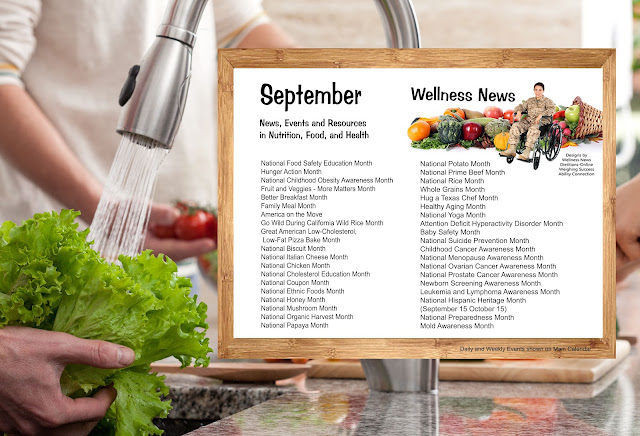Salmonella and Food
You may know that Salmonella can contaminate poultry and eggs, but it also sneaks into many other foods. Learn what you can do to make your food safer to eat.
Salmonella is a bacteria that commonly causes foodborne illness, sometimes called “food poisoning.” The CDC estimates That It causes 1 million foodborne illnesses annually in the United States. During the past few years, outbreaks of Salmonella illness have been linked to contaminated cucumbers, chicken, eggs, pistachios, raw tuna, sprouts, and many other foods.
Five Facts That May Surprise You
Don’t let Salmonella make you or your loved ones sick. Learn these five facts – and tips for lowering your chance of getting a Salmonella infection.
Do I have a Salmonella infection?
Contact your doctor or healthcare provider if you have:
Diarrhea and a fever over 101.5°F.
Diarrhea for more than 3 days that is not improving.
Bloody stools.
Prolonged vomiting that prevents you from keeping liquids down.
Signs of dehydration, such as:
Making very little urine.
Dry mouth and throat.
Dizziness when standing up.
You can get a Salmonella infection from a variety of foods. Salmonella can be found in many foods, including beef, poultry, eggs, fruits, pork, sprouts, vegetables, and even processed foods, such as nuts, frozen pot pies, chicken nuggets, and stuffed chicken entrees. When you eat food that is contaminated with Salmonella, it can make you sick. Contaminated foods usually look and smell normal, so knowing how to prevent Salmonella infection is important.
Salmonella illness is more common in the summer. Warmer weather and unrefrigerated foods create ideal conditions for Salmonella to grow. Be sure to refrigerate or freeze perishables (foods likely to spoil or go bad quickly), prepared foods, and leftovers within 2 hours. Chill them within 1 hour if the temperature is 90°F or hotter.
Salmonella illness can be serious and is more dangerous for certain people. Symptoms of infection usually appear 6–48 hours after eating a contaminated food but can take much longer. These symptoms include diarrhea, fever, and stomach cramps. The illness usually lasts 4–7 days without antibiotic treatment. Some people may have severe diarrhea and need to be hospitalized. Anyone can get a Salmonella infection, but some groups are more likely to develop a serious illness: older adults, children younger than 5, and people with immune systems weakened from medical conditions, such as diabetes, liver or kidney disease, and cancer or their treatment.
Salmonella causes far more illnesses than you might suspect. For every one case of Salmonella illness confirmed by laboratory tests, there are about 30 more cases that are not. Most people who get food poisoning usually do not go to the doctor or submit a sample to a laboratory, so we never learn what germ made them sick.
To avoid Salmonella, you should not eat raw eggs or eggs with runny whites or yolks. Salmonella can contaminate eggs, even perfectly normal-looking ones. But these eggs can make you sick, especially if they are raw or lightly cooked. Eggs are safe when you cook and handle them properly. Check Your Steps
Remember to follow the Clean, Separate, Cook, and Chill guidelines to help keep you and your family safe from food poisoning. Be especially careful when preparing food for young children, pregnant women, people with weakened immune systems, and older adults.
Clean
Wash hands with warm, soapy water for 20 seconds before and after handling uncooked eggs or raw meat, poultry, and seafood and their juices.
Wash utensils, cutting boards, dishes, and countertops with hot, soapy water after preparing each food item and before you prepare the next item.
Don’t wash raw poultry, meat, and eggs before cooking. Germs can spread to other foods, utensils, and surfaces.
Sanitize food contact surfaces with a freshly made solution of one tablespoon of unscented, liquid chlorine bleach in one gallon of water.
Separate
Keep raw meat, poultry, seafood, and eggs separate from other foods in your grocery cart and refrigerator.
Keep eggs in the original carton and store them in the main part of the refrigerator, not in the door.
Keep raw meat, poultry, and seafood separate from ready-to-eat foods, such as salads and deli meat.
Use separate cutting boards and plates for produce and for raw meat, poultry, seafood, and eggs.
Never place cooked food on a plate that previously held raw meat, poultry, seafood, or eggs.
Cook
Use a food thermometer to ensure that foods are cooked to a safe internal temperature:
145°F for beef, veal, lamb, and fish (let the meat rest for 3 minutes before carving or eating)
145°F for pork and ham (let the meat rest for 3 minutes before carving or eating)
160°F for ground beef, ground pork, ground veal, and ground lamb
160°F for egg dishes
165°F for poultry (chicken, turkey, duck), including ground chicken and ground turkey
165°F for casseroles
Microwave food to 165°F or above.
Chill
Keep your refrigerator at 40°F or colder.
Refrigerate or freeze perishables, prepared foods, and leftovers within 2 hours (or 1 hour if the temperature is 90°F or hotter).
 Will Sawyer, MD, is a Family Physician and the creator of the Henry the Hand Foundation and Henry the Hand Champion Handwasher.
Will Sawyer, MD, is a Family Physician and the creator of the Henry the Hand Foundation and Henry the Hand Champion Handwasher.





















